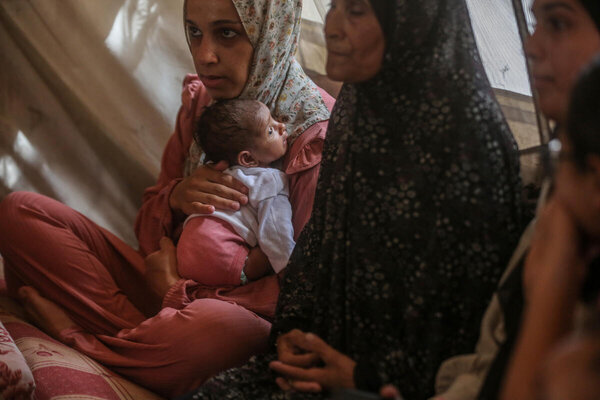The IPC Alert highlights that two out of the three famine thresholds have now been breached in parts of the territory, with the United Nations World Food Programme (WFP) and UNICEF warning that time is running out to mount a full-scale humanitarian response.
Relentless conflict, the collapse of essential services, and severe limitations on the delivery and distribution of humanitarian assistance imposed on the UN have led to catastrophic food security conditions for hundreds of thousands of people across the Gaza Strip.
Food consumption - the first core famine indicator - has plummeted in Gaza since the last IPC Update in May 2025. Data shows that more than one in three people (39 per cent) are now going days at a time without eating. More than 500,000 people - nearly a quarter of Gaza's population - are enduring famine-like conditions, while the remaining population is facing emergency levels of hunger.
Acute malnutrition - the second core famine indicator - inside Gaza has risen at an unprecedented rate. In Gaza City, malnutrition levels among children under five have quadrupled in two months, reaching 16.5 per cent. This signals a critical deterioration in nutritional status and a sharp rise in the risk of death from hunger and malnutrition.
Acute malnutrition and reports of starvation-related deaths - the third core famine indicator - are increasingly common but collecting robust data under current circumstances in Gaza remains very difficult as health systems, already decimated by nearly three years of conflict, are collapsing.
"The unbearable suffering of the people of Gaza is already clear for the world to see. Waiting for official confirmation of famine to provide life-saving food aid they desperately need is unconscionable," said Cindy McCain, WFP Executive Director. "We need to flood Gaza with large-scale food aid, immediately and without obstruction, and keep it flowing each and every day to prevent mass starvation. People are already dying of malnutrition and the longer we wait to act, the higher the death toll will rise."
As of July 2025, over 320,000 children, the entire population under five in the Gaza Strip, are at risk of acute malnutrition, with thousands suffering from severe acute malnutrition, the deadliest form of undernutrition. Essential nutrition services have collapsed with infants lacking access to safe water, breastmilk substitutes, and therapeutic feeding.
In June, 6,500 children were admitted for treatment for malnutrition, the highest number since the conflict began. July is tracking even higher, with 5,000 children admitted in just the first two weeks. With fewer than 15 percent of essential nutrition treatment services currently functional, the risk of malnutrition-related deaths among infants and young children is higher than ever before.
"Emaciated children and babies are dying from malnutrition in Gaza," said UNICEF Executive Director Catherine Russell. "We need immediate, safe and unhindered humanitarian access across Gaza to scale up the delivery of life-saving food, nutrition, water and medicine. Without that, mothers and fathers will continue to face a parent's worst nightmare, powerless to save a starving child from a condition we are able to prevent."
Despite a partial reopening of crossings, humanitarian aid entering Gaza is barely a trickle of what a population of over two million people needs every month. Just to cover basic humanitarian food and nutrition assistance needs in Gaza, more than 62,000 tons of life-saving aid is required every month. Restarting commercial food imports are also critical to provide dietary diversity with fresh fruits, vegetables, dairy products, and proteins such as meat and fish.
Additionally, the lack of fuel, water and other vital aid continues to undermine efforts to prevent famine and deaths among children.
The agencies welcome the recent new commitments to improve the operating conditions for humanitarian organizations, including the implementation of humanitarian pauses and hope these measures will allow for a surge in urgently needed food and nutrition assistance to reach hungry people without further delays.
The UN agencies also reiterate their urgent calls for:
• An immediate and sustained ceasefire, to stop the killing, allow for the safe release of hostages and further enable lifesaving humanitarian operations.
• Sustained safe and unimpeded humanitarian access, for the mass influx of assistance via all available crossings, and to deliver food, nutrition supplies, critical water, fuel, and medical assistance to families in need across Gaza.
• Urgent need to get commercial traffic flowing into Gaza by reviving commercial supply chains to restore local markets. The protection of civilians and aid workers, alongside the restoration of essential services, in particular health, water and sewage infrastructures.
• Investment in the recovery of local food systems, including the revitalization of bakeries, markets and rehabilitation of agriculture.







